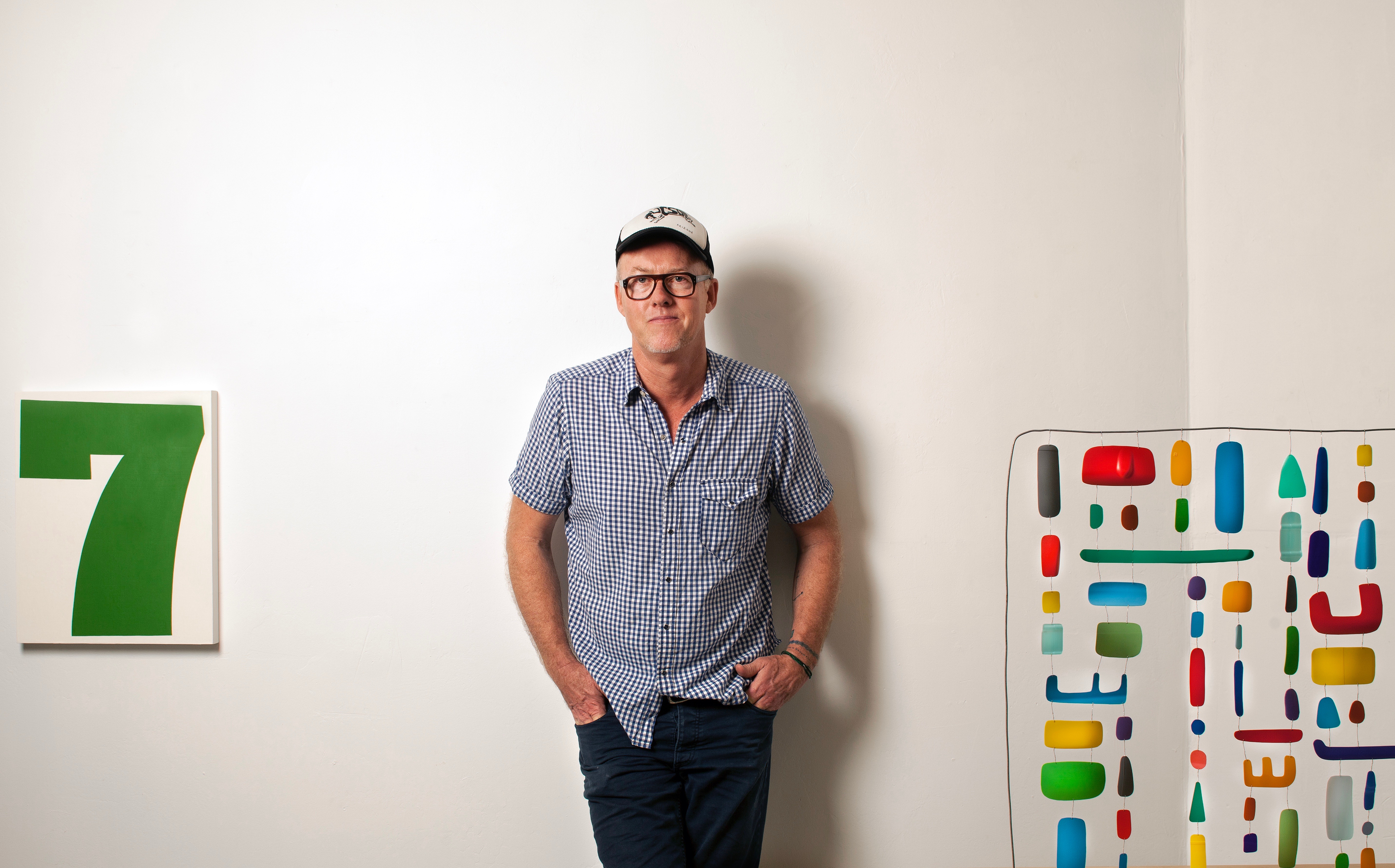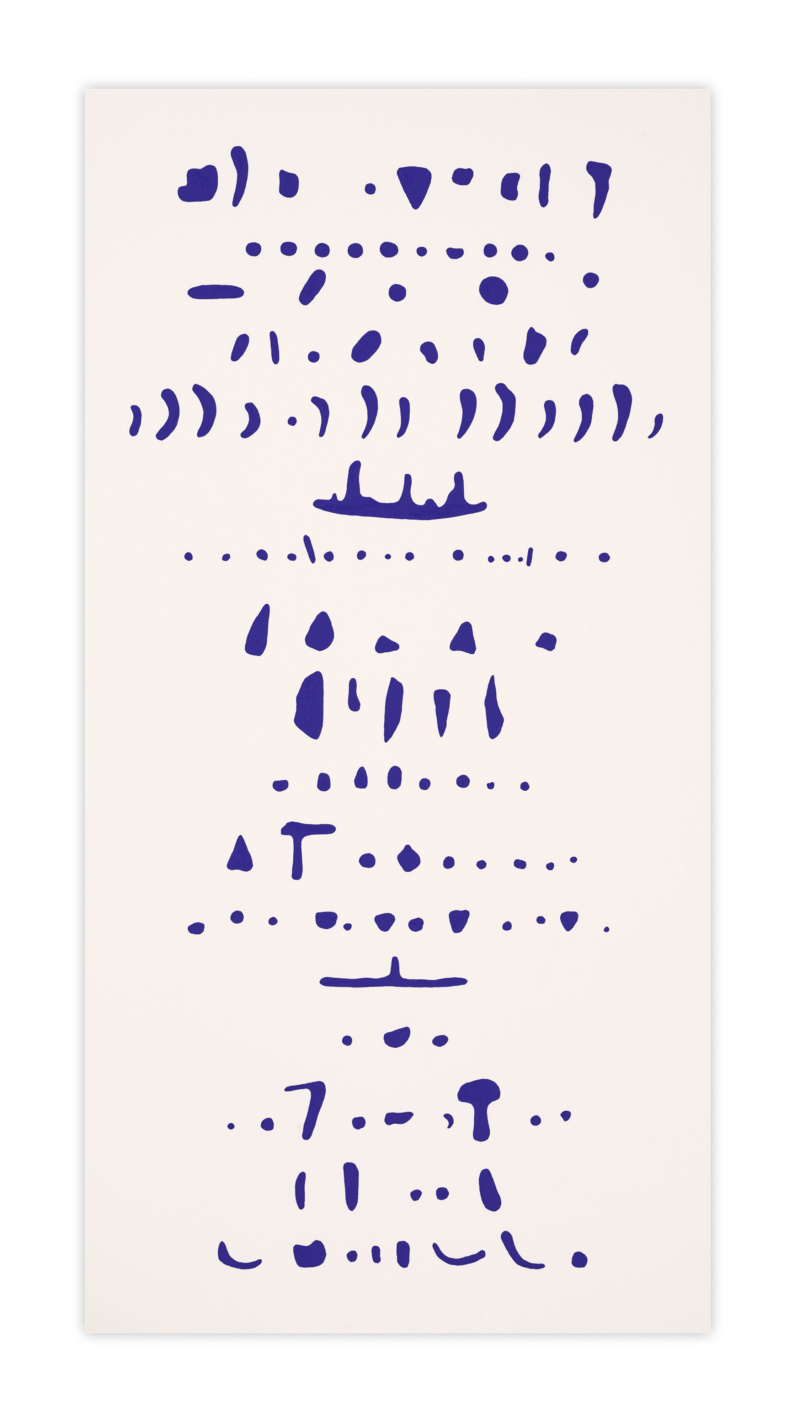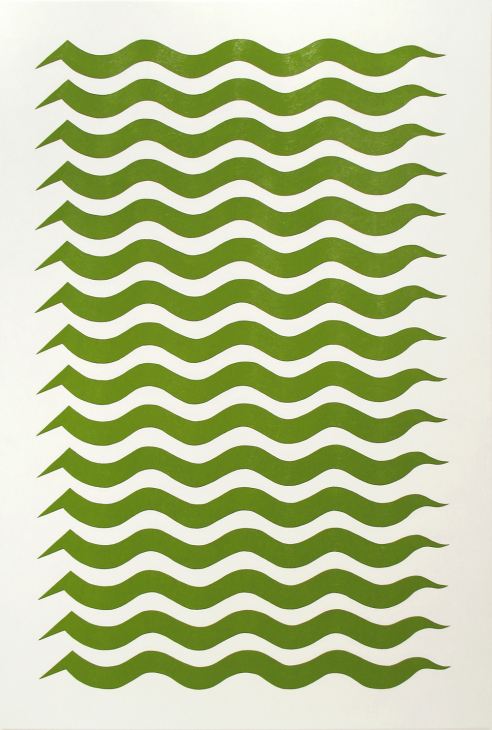
Artist Matt Magee works methodically. He keeps notebooks with thumbnail sketches and lists of words which inform the images he makes. Often when playing with a word, Magee will arrive at an image. Finding connections between the verbal and the visual is his modus operandi.
In Magee’s work, convergences of languages occur across time and space. His eyes translate the geometries of airport terminals into pictographs. A “line of pebbles” into “a stroke of paint,” representing “the same intuitive gesture” (his words). Ultimately, Magee’s work evinces a language's forms, rhythms, conventions. He invests in our systems of communication and explodes them for the viewer.

Magee’s brand of minimalism is intimate and warm rather than cold. Ovoids and crescents—voids—appear anew, crafted to narrate a personal cosmology. Magee’s sophisticated lexicon consists of symbols both invented and appropriated. He describes himself as “a scavenger and archivist” whose paintings are “based on systems of randomness and order.” The letter U becomes You. Rows of js, rose of jays. Word play derives from a fascination with verbal acuity and his time studying Rauschenberg as the artist’s archivist and jack of all trades.
In his New York Times article “Hunting for the Origins of Symbolic Thought,” Ferris Jabr looks at the relationship between symbols and tools, concluding that symbols are tools: “Rather than directly changing the world around us, symbols change the way we perceive it. They extend not our bodies, but our minds.” Magee’s semiotics function in this way, pushing us beyond ourselves, to the ineffable and unmined.

Collapsing the mundane with the sublime is a gesture which often appears in his work. Receipt (2016), for instance, elevates a commonplace language into abstraction. Referencing a blurry receipt Magee once received, the small slip is magnified under the artist’s lens. The work breathes an invented punctuation, an intuitive language discovered while completing some rote task.
My favorite piece of his is Greentext (2010). Here kelly green seismic waves glide across the page, emitting a gentle frequency. These waves can be read from left to right or right to left, a visual palindrome. This bidirectionality in particular turns conventional reading norms on their head: a paragraph plays out, defying our instincts. And this is exactly how Magee’s work should be consumed: by a reading of resonant beautiful objects. He notes: “When asked what her work was about, Agnes Martin said ‘beauty.’”
Magee is the recipient of Phoenix Art Museum’s Arlene and Morton Scult Award (among others) and is currently showing work at the museum until November 4. He also has a host of solo shows coming up at inde/jacobs in Marfa in the fall of 2019, and at Etherton Gallery in Tucson and Wilson Stephens & Jones in London both in March. Take one of these opportunities to read the work.




